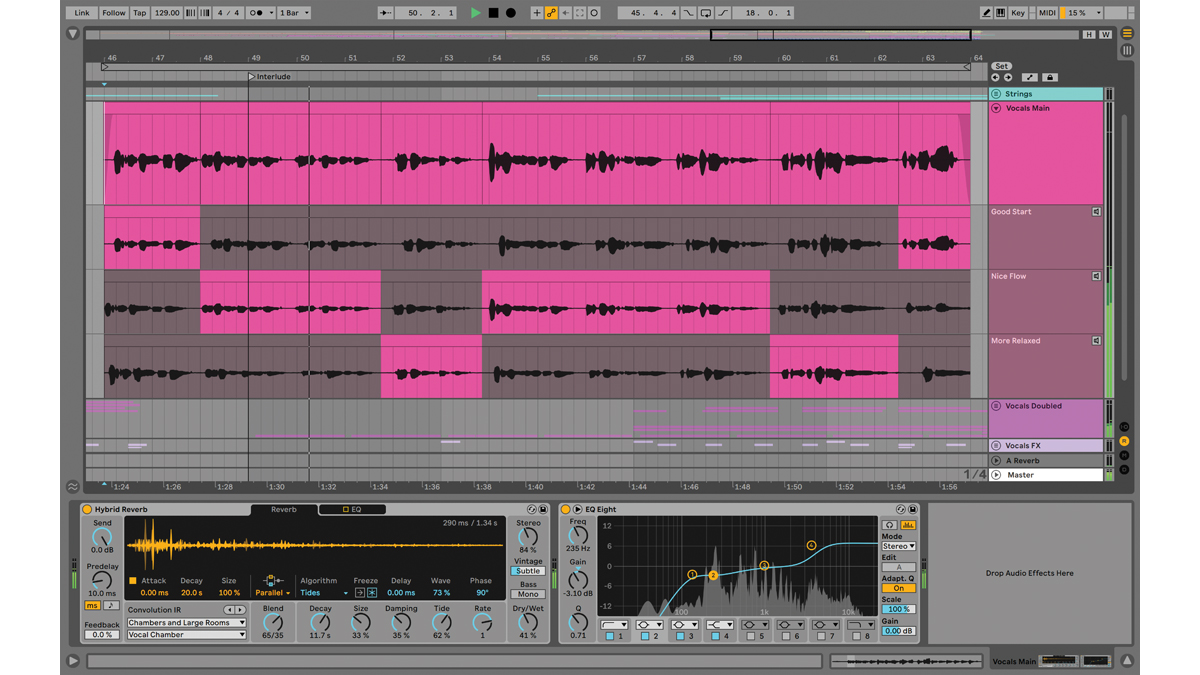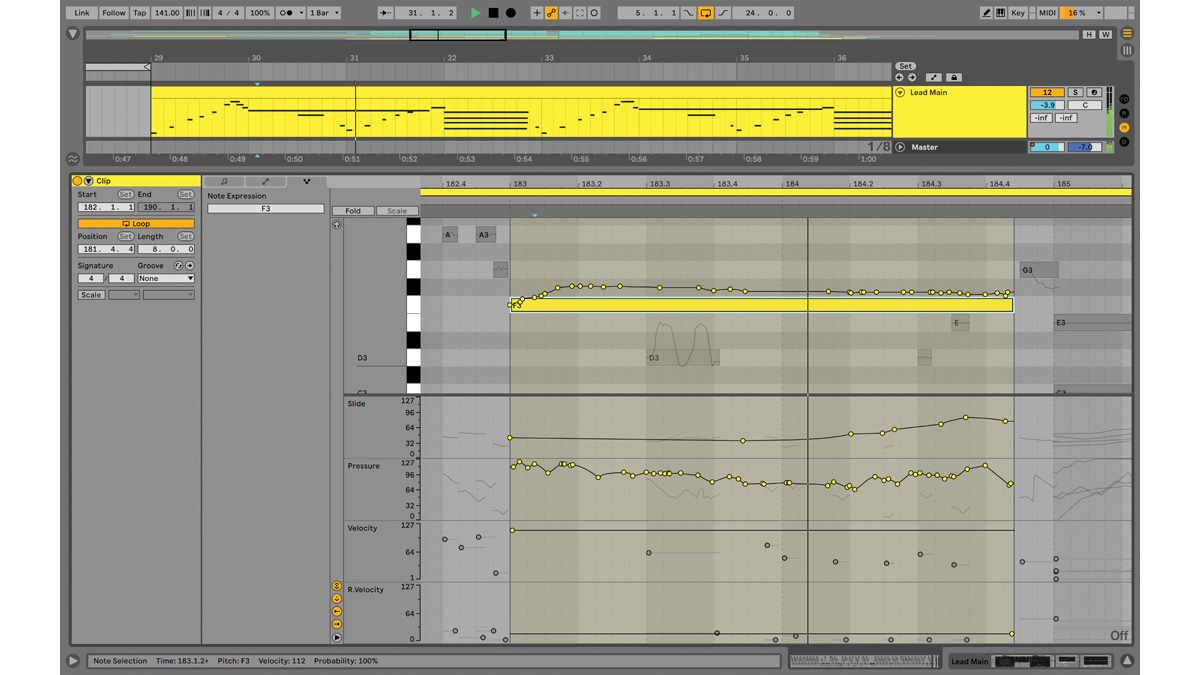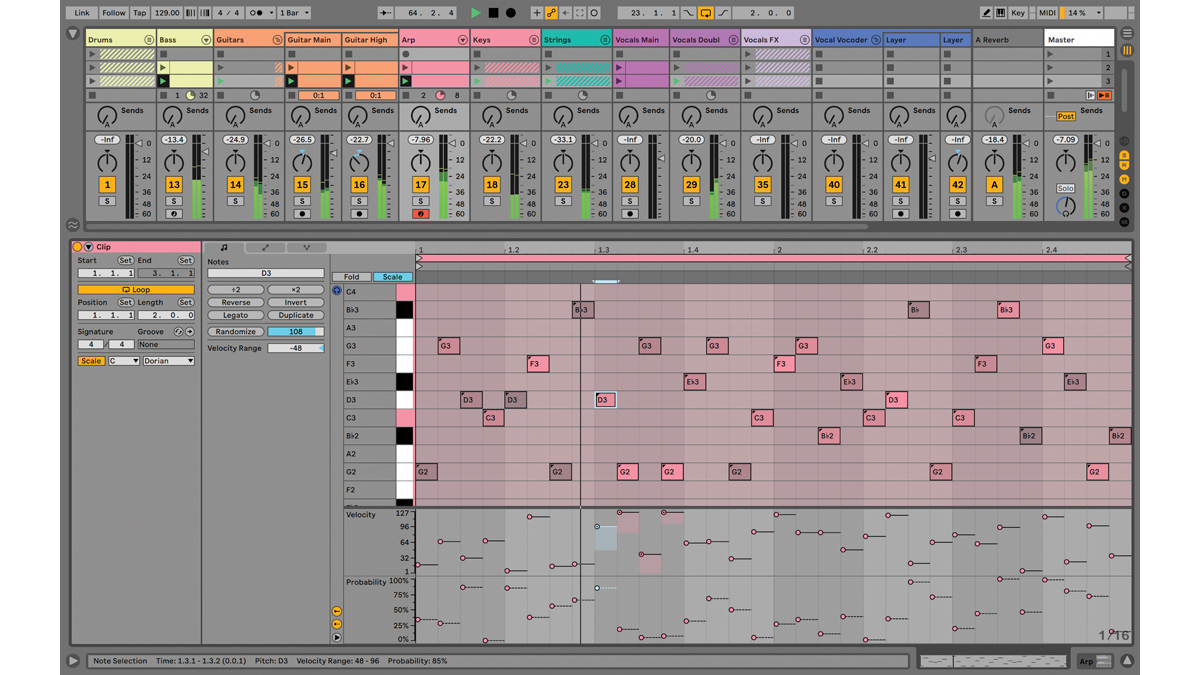Ableton Live 11 announced: DAW gets new features for “recording, performing or experimenting”
Major update adds comping, MPE support, new devices and more
It’s been three years since Ableton announced a ‘full’ new version of its DAW, but now, finally, Live 11 has broken cover. As you might expect, it’s the usual mix of new features, devices and refinements, designed to help you when you’re “recording, performing or experimenting”.
Let’s start by looking at Comping: Live can now organise multiple passes of an audio or MIDI performance into individual takes. You can then blend the best elements of these takes to get your ‘perfect’ result. Relatedly, there’s also Linked-track editing, which, as it implies, enables you to link two or more tracks and edit their content simultaneously.

Next, and in line with several of its rivals, Live 11 gets support for MIDI Polyphonic Expression. The Expression View enables you to adjust the pitch, slide and pressure envelopes on a note-by-note basis, while Wavetable, Sampler and Arpeggiator have all been updated to support MPE.
Speaking of devices, there are some big-hitting additions in Live 11. Hybrid Reverb gives you both convolution and algorithmic options, while Spectral Resonator works by breaking the audio down into partials and then stretching, shifting and blurring the result by a frequency or note. Spectral Time, meanwhile, takes the partials and feeds them into a frequency-based delay.

Continuing the creative and experimental theme, there’s also the Inspired by Nature collection - six instruments and effects that use nature and physics as their inspiration, made in collaboration with Dillon Bastan - and the glitchy PitchLoop89, which was created with the help of Robert Henke.
Of course, Live isn’t just a studio DAW - it’s used on stage, too - so Ableton has seen fit to add several performance-friendly features. Most notably, there’s Live Tempo Following: the theory is that Live 11 can ‘listen’ to incoming audio from other performers and adjust its tempo accordingly, making it feel more like a band member and less of a rigid time-keeper that everyone has to get in line with.
Marco Snapshots, meanwhile, enable you to store the state of Macros for later recall, and you can also configure racks to have between one and 16 Macros, and Macro states can be randomised.
Get the MusicRadar Newsletter
Want all the hottest music and gear news, reviews, deals, features and more, direct to your inbox? Sign up here.
Elsewhere, if you’re looking to humanise your music, there are new features based on chance. Note chance enables you to set the probability that a note or drum hit will trigger, and also to let Live generate pattern variations that change over time. Velocity chance, on the other hand, lets you define ranges for velocity probability, so you’ll hear subtle dynamic changes in your patterns.

There are new sound collections in Live 11, too: Voice Box offers vocal samples, instruments and Effect Racks, while Mood Reel and Drone Lab are on hand to provide texture. There’s also a new close-recorded Upright Piano, and both Brass and String Quartets, all created in collaboration with Spitfire Audio.
It’s also worth noting that several existing Live devices have been improved, and the core library has been updated and expanded. Improvements have also been made in the areas of clip editing and CPU metering, and you can now see scales in Live’s MIDI editor so that you can see which notes ‘fit’ in a given key.
First impressions are that Live 11 is a careful and considered update that should please the Ableton fanbase, with certain features having long been requested. It’ll be released early in 2021, with Live Suite ($749/€599) getting all of the new features, and Live Standard ($449/€349) and Intro ($99/€79) getting progressively fewer. Existing Live users should check their accounts for upgrade pricing.
Find out more on the Ableton website, where all versions of Live 10 are currently available at a 20% discount. Customers who buy Live 10 during this time will also get a free copy of Live 11 when it’s released.



I’m the Deputy Editor of MusicRadar, having worked on the site since its launch in 2007. I previously spent eight years working on our sister magazine, Computer Music. I’ve been playing the piano, gigging in bands and failing to finish tracks at home for more than 30 years, 24 of which I’ve also spent writing about music and the ever-changing technology used to make it.









